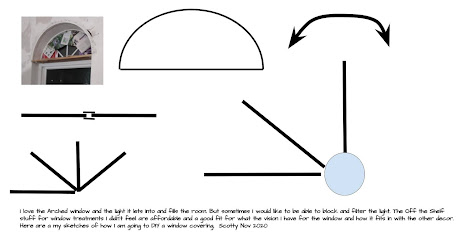Notes-Suggestions-Ideas
I am going to mention ideas and suggestions on ways that will reduce your monthly bills in utility savings by incorporating the following examples into the Green Design of your building. My suggestions will include: PV Solar Electric, Solar Water Heating, and Energy Conservation.
The greatest use of your investment dollars will come by installing Insulation in the various parts of your building.
As a general rule it is cheaper to save energy than it is to create energy.
It does not matter if this is in gas or electric. Basically: If you can save it you don’t have to make it.
The Department of Energy suggests for our region various levels of insulation
Ceiling: R38 - R60
Walls: R13 -R19
Floor: R25 - R30

Examples of where to insulate. 1. In unfinished attic spaces, insulate between and over the floor joists to seal off living spaces below. If the air distribution is in the attic space, then consider insulating the rafters to move the distribution into the conditioned space. (1A) attic access door 2. In finished attic rooms with or without dormer, insulate (2A) between the studs of "knee" walls, (2B) between the studs and rafters of exterior walls and roof, (2C) and ceilings with cold spaces above. (2D) Extend insulation into joist space to reduce air flows. 3. All exterior walls, including (3A) walls between living spaces and unheated garages, shed roofs, or storage areas; (3B) foundation walls above ground level; (3C) foundation walls in heated basements, full wall either interior or exterior. 4. Floors above cold spaces, such as vented crawl spaces and unheated garages. Also insulate (4A) any portion of the floor in a room that is cantilevered beyond the exterior wall below; (4B) slab floors built directly on the ground; (4C) as an alternative to floor insulation, foundation walls of unvented crawl spaces. (4D) Extend insulation into joist space to reduce air flows. 5. Band joists. 6. Replacement or storm windows and caulk and seal around all windows and doors. Source: Oak Ridge National Laboratory

Following the above guides let's focus in on the areas that we discussed: Ceiling, Floor, Walls.
Ceiling:
1565 sq feet of estimated roof (see solar estimate). Normal Ceilings are constructed with 2x12 lumber. That is not enough space to provide adequate insulation with normal batt type insulation to meet the suggested level of R60.
My suggestions are:
Put the Insulation on top of the roof eliminating any insulation in the cavities. As we talked about I feel that when the Insulation is on the outside is like a person having a coat on. It eliminates the hot or cold from entering.
Commercial Buildings utilize this type of insulation to stop the cold/heat from getting to the steel, because when the steel gets hot or cold it expands/contracts and is a big energy problem.
They also make this in tapered sections to direct water easily.
Exposed Roof System for Aesthetic purposes
I used Menards for a guide. I suggest go to: the Roofing place at Vandeventer/44 area. The old RSG under new owners.
Johns Manville R-23.6 4" x 4' x 8' Fiberglass Face Polyiso Roof Decking Insulation
Johns Manville R-17.4 3" x 4' x 8' Fiberglass Face Polyiso Roof Decking Insulation
Johns Manville R-11.4 2" x 4' x 8' Fiberglass Face Polyiso Roof Decking Insulation
|
Floors:
Green Possibility: It is possible to install a heated flooring system that would eliminate the need for HVAC heat system. This type of flooring system is called radiant heating. The heating is accomplished using electricity to heat wires, heat mats or tubes with liquid that is heated by electricity, solar, or gas.
Radiant Flooring systems warm the floor and the heat rises into the rooms. This also eliminates cold spots hvac fail to work in.
The use of this may depend on the final floor choice selected. If it was going to be a tile floor I say yes. Maybe not a good idea if a finished wood floor is chosen-discussion needed. If you chose to install a concrete floor I definitely suggest a radiant floor heating system.
Walls:
For a total Green Aspect (but not $ viable suggestion) Exterior insulation would once again be suggested. Leaving you the option of utilizing the interior brick walls for aesthetic and old world design purposes.
This same type insulation can be used on the inside but has to be covered to meet fire code. 1/2In Sheetrock.
The Money saver is to build 2x4 framed walls with normal batt insulation and sheetrock. But you loose the kool looking brick look.
Additional Points for consideration:
Hot Water could be heated during the daytime easily with Solar. I suggest an instant type heater installed for use when needed.
Liquid radiant flooring systems can be heated by Solar, tied into what ever system is used, or be independent with their own broiler system.
Instant heaters without solar would require ½ the amount of pipes needed. Only one cold water pipe to the fixture is needed.
I work with Dale Or and Suzie with “Master Plumbers StLouis” permits and as my go to person to call for advice.
I would like to introduce you to Slim Shady, Shady Jack’s son. He is the one who built Shady Jacks and the 15+ bars they owned previously. He knows his stuff about building bars and these old buildings.
Everything in your place is going to use electricity. Put in extra electric boxes or places to connect future lines.
Along the same lines. Buying Energy Star Rated Kitchen equipment when you can is a smart investment.
Upgrades to electrical motors and fans on commercial equipment qualify for discounts from Ameren UE.
Solar:
1,565 sq ft estimate roof space from a couple of solar measuring satellite images- The “net cost” price quoted in the 3rd image is way off the mark. Your system would be cheaper.
Notes:
Using satellite imagery for determining roof size and using an electric bill of $400 / month. Solar PV would cover the 50% or up to $200 per month. $200 x 12 months = $2,400 yearly savings. 22 KW system
Bill Size $500 Solar would cover 40%
Additional Solar Panels could be installed on the West Wall of the Building- capture the afternoon sunlight.
Additional Solar Panels could be used to create Open Air Spaces below where people could gather. See picture above.
Pole Mount systems picture above in the background.
I’ve considered many things for your building. The above suggestions would be my first choices and places that would save you money and create a green building to capture all the tax and other benefits available.
I welcome further discussion about anything I’ve mentioned and also assisting you with the renovations.
For detailed and specific estimates I need to see: blueprints, design notes, floor plans.
I have Green Building Financing Resources that may work to your benefit they will assist in: Solar PV and Water, Energy Conservation, Windows, Doors, Insulation, etc.
Thank You for stopping by the Green Blog. If additional information in needed or you have a question let me know by posting a question or comment. Together we can make a difference and create a future that will benefit everyone.
-->


















